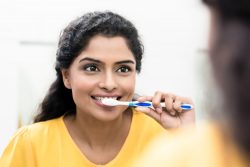 Researchers at the Karolinska Institutet have recently revealed new knowledge on the cellular makeup and growth of teeth that can expedite new developments in regenerative dentistry and treatments for tooth sensitivity. Regenerative dentistry is a biological therapy for damaged teeth.
Researchers at the Karolinska Institutet have recently revealed new knowledge on the cellular makeup and growth of teeth that can expedite new developments in regenerative dentistry and treatments for tooth sensitivity. Regenerative dentistry is a biological therapy for damaged teeth.
Teeth develop via a complex process where soft tissue along with connective tissues, blood vessels and nerves are bonded with three different types of hard tissue into a functional body part. Scientists often use the mouse incisor as an explanatory models for the process. The mouse incisor grows continuously and is renewed during the animal’s life.
Although the mouse incisor has been well studied in a developmental context, a variety of fundamental questions in regards to the various tooth cells, stem cells and their cellular dynamics and differentiation still remain unanswered.
By using a single-cell RNA sequencing method along with genetic tracing, the research team have now identified and characterized all populations of cells in mouse teeth and additionally in the young growing and adult human teeth.
From stem cells to completely differentiated adult cells they were able to decipher the differentiation pathways of odontoblasts which give rise to dentine (the hard tissue closest to the pulp) and ameloblasts which give rise to the enamel. They also discovered new types of cells and cell layers in teeth that can play a part in tooth sensitivity.
Some of the team’s findings can also explain certain characteristics of the immune system in teeth. Other findings have shed new light on the formation of tooth enamel which is the hardest tissue in the human body.
The team hopes and believes their work can form the basis for new approaches to dentistry in the future. They hope it can help expedite the fast expanding field of regenerative dentistry. Their results have been released publicly in the form of searchable interactive and user friendly atlases of human and mouse teeth. They believe they will prove a useful resource not only for dental biologists but additionally for researchers who are interested in development and regenerative biology in general.
To view the original scientific study click below
Dental cell type atlas reveals stem and differentiated cell types in mouse and human teeth





